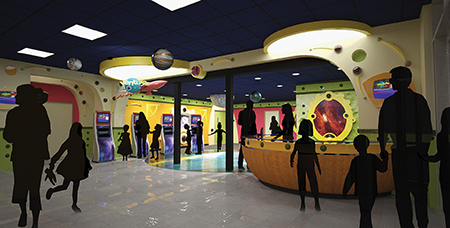
By Curtiss H. Doss, AIA
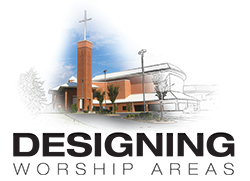 Whether or not to provide separate worship environments for the youngest demographic in a church — children and preschoolers — can spark a hot debate.
Whether or not to provide separate worship environments for the youngest demographic in a church — children and preschoolers — can spark a hot debate.
This source of contention reinforces the original premise and guiding concept for this “Designing Worship Areas” Series: Every church is different. If you’re wondering why this statement has been made five times in as many series installment, it’s simply because it’s true — and this area of ministry is a true testament.
Preschool and children’s spaces are the most unique of all worship spaces, in my opinion. They must capture these special worshippers and hold their attention while also supporting the worship leaders. Even with younger ages in attendance and shorter “sermons,” these services are no less significant. (After all: “Jesus loves me, this I know!”) We tend to make worship more complicated than it should be, and a quick visit through these age groups will bring one back to his or her spiritual roots.
Preschool and children’s worship spaces have similar elements to those found in the student areas we covered in the previous series installment. However, they generally tend to be a bit more subdued.
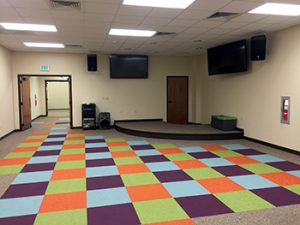 Aesthetical, technical and flexible
Aesthetical, technical and flexible
The appropriateness of these three key design tenets — aesthetical, technical and flexible — is unique to preschool and children’s spaces. Even as designers, many times we pay less attention to these areas, regarding them as less important … but nothing could be further from the truth. Rather, this is the most fertile soil of the heart we can find to plant the seeds and see the harvest of souls for the Kingdom.
Some unique opportunities include the coolness of the use of color, the flexibility of seating options (colored carpet tiles where each child gets his or her own tile for their seat), simplified platforms and props. Some of the photos in this article tell the story better than words can, actually.
 Aesthetical. The aesthetical aspects are generally created with color and themes. Our firm has used themes such as Noah’s Ark, nature parks, outer space and warehouses to invite kids and their families to experience the ministry. We have used color to create a different environment than the ones that the “old folks” create for themselves.
Aesthetical. The aesthetical aspects are generally created with color and themes. Our firm has used themes such as Noah’s Ark, nature parks, outer space and warehouses to invite kids and their families to experience the ministry. We have used color to create a different environment than the ones that the “old folks” create for themselves.
The opportunity to capture the hearts of children and preschool students is very diverse and allows for geographical, as well as topical, influences to reach these impressionable hearts. If a church is located in a coastal region, a theme could be the oceans. If a church resides in the mountains, the mountain scape could be a theme.
Regardless, the opportunity to teach about God, His creation, how we’re a part of it, and His love for us is ever-present.
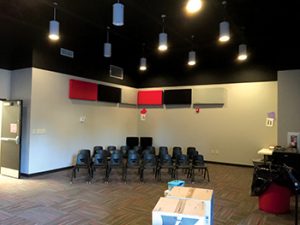 Technical. As with any other type of worship space, all the technical aspects related to a worship space for children and preschoolers are essential — particularly, the needs related to music and participatory involvement. Yet, many times, the technical systems in these spaces are substantially less expansive, and sometimes less expensive.
Technical. As with any other type of worship space, all the technical aspects related to a worship space for children and preschoolers are essential — particularly, the needs related to music and participatory involvement. Yet, many times, the technical systems in these spaces are substantially less expansive, and sometimes less expensive.
Children and preschoolers need a “home” at church, just like students. As such, the creation of environments which speak their language, encourage participation, and promote a non-threatening and relaxed environment, produces a platform to minister. Remember that each ministry is different (as is every church) and what is successful in one ministry might work within the DNA of another ministry.
 Flexibility. A third element is the need for flexibility. More often than not, funds to build space-specific areas such as worship spaces for children and preschoolers are not readily available. That makes these worship spaces more multi-use environments than “big church,” as kids call it.
Flexibility. A third element is the need for flexibility. More often than not, funds to build space-specific areas such as worship spaces for children and preschoolers are not readily available. That makes these worship spaces more multi-use environments than “big church,” as kids call it.
With a multi-use environment, children’s and preschool ministries can accommodate a multitude of programs, from vacation bible school, to music programs, to Awana, to worship. The ability to quickly change is critical to the functionality of the space. We have found that simple construction elements are a must, including a flat floor, highly functional technical systems, and versatile platforms.
As with student areas, the desire for stage-like functions can create challenges with most building codes. An exceptional understanding of the codes and a working relationship with the building officials can avoid numerous problems during construction. Ignoring the platform / stage dilemma can negatively impact the functionality of the space.
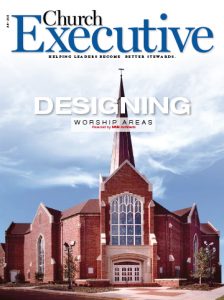
The children’s and preschool worship space is a special design challenge; to create the desired result, it needs a great level of knowledge and understanding of the specific ministry. The personal reward of seeing these young church members worshipping Jesus and building the bridge between their hearts and the love He has for them is one of the best results we can hope to achieve in the design of religious facilities.
Curtiss H. Doss, AIA is principal of McGehee Nicholson Burke (MNB) Architects in Memphis, TN. Doss has consulted with church clients for more than 20 years, and his architectural practice spans more than 30 years.


